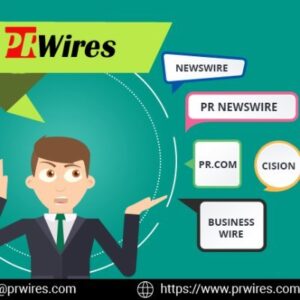On-page optimization is a crucial aspect of SEO that involves enhancing individual web pages to rank higher and earn more relevant traffic from search engines. Effective on-page optimization ensures that your content is structured and optimized to meet both user and search engine needs. In this comprehensive guide, we'll delve into the best practices for on-page optimization, providing actionable insights and strategies to help you improve your content’s SEO performance.
What is On-Page Optimization?
On-page optimization refers to the practice of optimizing individual web pages to rank higher and attract more relevant traffic in search engines. This includes both the content and HTML source code of a page that can be optimized, as well as elements like meta tags, headings, and internal links.
Key Elements of On-Page Optimization
- Title Tags: The title of your web page, displayed in search engine results and browser tabs.
- Meta Descriptions: A brief summary of the page's content, appearing under the title tag in search results.
- Headings (H1, H2, H3, etc.): Hierarchical text elements used to organize content.
- URL Structure: The format and readability of your page’s URL.
- Content Quality: The relevance, depth, and uniqueness of the content.
- Internal Linking: Links that connect different pages within your website.
- Image Optimization: Proper use of alt text, file names, and image sizes.
- Mobile-Friendliness: Ensuring your page is accessible and usable on mobile devices.
- Page Speed: The loading time of your page.
- User Experience (UX): Overall user experience, including design, navigation, and readability.
Step-by-Step Guide to On-Page Optimization
1. Conduct Keyword Research
Before creating or optimizing content, identify relevant keywords that your target audience is searching for. Use keyword research tools to find high-volume, low-competition keywords.
Tools for Keyword Research:
- Google Keyword Planner
- SEMrush
- Ahrefs
- Moz Keyword Explorer
Tips for Effective Keyword Research:
- Focus on long-tail keywords for more specific targeting.
- Analyze search intent to understand what users are looking for.
- Check competitor keywords for additional insights.
2. Optimize Title Tags
Title tags are one of the most important on-page SEO elements. They should be concise, include primary keywords, and entice users to click.
Best Practices for Title Tags:
- Length: Aim for 50-60 characters.
- Keyword Placement: Place primary keywords towards the beginning.
- Clarity: Ensure the title clearly reflects the page content.
- Branding: Include your brand name, if relevant.
3. Craft Compelling Meta Descriptions
Meta descriptions provide a summary of your page content in search results and influence click-through rates.
Best Practices for Meta Descriptions:
- Length: Keep it between 150-160 characters.
- Inclusion of Keywords: Incorporate relevant keywords naturally.
- Call-to-Action: Use engaging language to encourage clicks.
- Unique Descriptions: Create unique meta descriptions for each page.
4. Structure Content with Headings
Headings organize content and make it easier for users and search engines to understand the page’s structure.
Best Practices for Headings:
- Use H1 for Main Title: Each page should have one H1 tag.
- Use H2, H3 for Subheadings: Organize content into sections with H2 and H3 tags.
- Keyword Usage: Incorporate relevant keywords in headings.
- Readability: Ensure headings are clear and descriptive.
5. Create a SEO-Friendly URL Structure
URLs should be clean, descriptive, and include relevant keywords.
Best Practices for URL Structure:
- Simplicity: Keep URLs short and simple.
- Keywords: Include primary keywords where possible.
- Hyphens: Use hyphens to separate words (e.g., example.com/seo-tips).
- Avoid Special Characters: Refrain from using special characters or excessive parameters.
6. Develop High-Quality Content
Content is the cornerstone of on-page optimization. It should be informative, engaging, and relevant to your audience.
Best Practices for Content Creation:
- Depth: Provide comprehensive information on the topic.
- Uniqueness: Ensure content is original and not duplicated.
- Keyword Optimization: Use keywords naturally throughout the content.
- Readability: Write in a clear, easy-to-read style.
7. Optimize Images
Images enhance content but need to be optimized for SEO and performance.
Best Practices for Image Optimization:
- File Names: Use descriptive, keyword-rich file names.
- Alt Text: Include relevant keywords in alt text descriptions.
- Image Size: Compress images to reduce loading time without sacrificing quality.
- Formats: Use appropriate formats (e.g., JPEG for photos, PNG for graphics).
8. Implement Internal Linking
Internal links connect different pages within your site, helping users and search engines navigate your content.
Best Practices for Internal Linking:
- Relevance: Link to related content that adds value.
- Anchor Text: Use descriptive, keyword-rich anchor text.
- Avoid Overlinking: Don’t overuse internal links, which can be seen as spammy.
9. Ensure Mobile-Friendliness
With increasing mobile usage, ensure your site is mobile-friendly.
Best Practices for Mobile Optimization:
- Responsive Design: Use responsive design to adapt to different screen sizes.
- Readable Text: Ensure text is legible without zooming.
- Easy Navigation: Design navigation that’s easy to use on mobile devices.
10. Improve Page Speed
Page speed affects user experience and SEO. A fast-loading page is crucial for retaining visitors.
Best Practices for Page Speed Optimization:
- Minimize HTTP Requests: Reduce the number of elements that need to be loaded.
- Enable Compression: Use GZIP to compress files.
- Leverage Browser Caching: Store static files in the browser cache.
- Optimize Code: Minify CSS, JavaScript, and HTML files.
Frequently Asked Questions (FAQ)
1. What is the difference between on-page and off-page SEO?
On-page SEO focuses on optimizing individual pages for better search rankings, including content and HTML elements. Off-page SEO involves external factors like backlinks and social media presence.
2. How often should I update my on-page SEO?
Regular updates are recommended, especially if there are changes in SEO best practices or content relevancy. Aim for a review at least every 6-12 months.
3. What are some tools for on-page SEO optimization?
Tools include Google Search Console, SEMrush, Ahrefs, Moz, and Yoast SEO (for WordPress).
4. Can on-page optimization affect my website’s loading speed?
Yes, on-page optimization can impact loading speed. Practices such as optimizing images and minimizing code can help improve page speed.
5. How does mobile-friendliness affect SEO?
Mobile-friendliness is a ranking factor for Google. A mobile-friendly site provides a better user experience and is crucial for ranking well in mobile search results.
6. What role does content quality play in on-page optimization?
Content quality is central to on-page optimization. High-quality, relevant content improves user engagement, reduces bounce rates, and boosts SEO performance.
7. How important are meta descriptions for SEO?
Meta descriptions are important for click-through rates but do not directly impact rankings. A well-crafted meta description can encourage users to click on your link in search results.
8. What are some common mistakes to avoid in on-page SEO?
Common mistakes include keyword stuffing, using duplicate content, neglecting mobile optimization, and having poor internal linking.
9. How can I measure the effectiveness of my on-page SEO efforts?
Measure effectiveness using tools like Google Analytics and Google Search Console. Track metrics such as organic traffic, bounce rate, and rankings for targeted keywords.
10. Is on-page SEO a one-time process?
No, on-page SEO is an ongoing process. Regular updates, optimizations, and content improvements are necessary to maintain and improve search rankings.
Get in Touch
Website – https://www.webinfomatrix.com
Mobile - +91 9212306116
Whatsapp – https://call.whatsapp.com/voice/9rqVJyqSNMhpdFkKPZGYKj
Skype – shalabh.mishra
Telegram – shalabhmishra
Email - info@webinfomatrix.com

.jpg)
.jpg)





 English (US) ·
English (US) ·